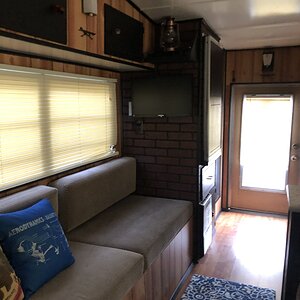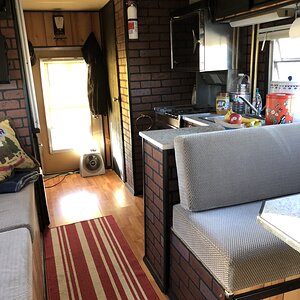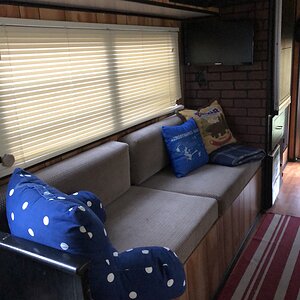Joe Hogan
RVF Supporter
- Joined
- Nov 3, 2019
- Messages
- 3,261
- Location
- Florida
- RV Year
- 2024
- RV Make
- Newmar
- RV Model
- Dutch Star 4311
- RV Length
- 43
- Chassis
- Spartan
- Engine
- Cummins
- TOW/TOAD
- 2018 Ford Flex
- Fulltimer
- No
The standard BIM installed by Newmar appears to not able to handle the Li Ion House batteries current load. The standard unit failed quickly and we replaced with a Li-BIM that is specifically designed to interface between a lead acid chassis battery and a Li Ion House battery bank.
For those unaware of a BIM's purpose, Li-Bi-Directional Isolation Manager, unit does:
If the coach battery resting voltage exceeds 13.4 V then the BIM will disconnect. A resting voltage greater than 13.4 V indicates a fully charged battery. Note that “resting voltage” means that no current is flowing to the coach battery.
The BIM will disconnect if the alternator voltage exceeds 14.4 V. This protects the coach battery from overcharging. The LiFePO4 Battery Isolation Manager will disconnect if the voltage difference between the alternator and the coach battery is less than 0.1 V. If the voltage difference is too low, then there is a negligible charging current, and no need to connect to the coach battery.
The BIM will disconnect if the alternator voltage drops below 13.3 V. If the alternator voltage is too low, then it cannot adequately charge the coach battery, so there is no reason to connect.
Now the Question:
Upon inspection of the BIM, I traced the control wires back to a BIRD909 which is programable with the appropriate KIB tools. The BIRD appears to monitor the functions of the BIM in my coach an can be adjusted for certain voltages.
If there is anyone out there that understands why these are both present in the RV charging circuits, please share.
For those unaware of a BIM's purpose, Li-Bi-Directional Isolation Manager, unit does:
Description
The LiFePO4 Battery Isolation Manager (BIM) monitors voltage and connects batteries when needed. Under normal charging conditions, the BIM will connect for 15 minutes every 35 minutes. That means that the BIM will connect for 15 minutes, disconnect for 20 minutes, and repeat this cycle until the coach battery is charged.If the coach battery resting voltage exceeds 13.4 V then the BIM will disconnect. A resting voltage greater than 13.4 V indicates a fully charged battery. Note that “resting voltage” means that no current is flowing to the coach battery.
The BIM will disconnect if the alternator voltage exceeds 14.4 V. This protects the coach battery from overcharging. The LiFePO4 Battery Isolation Manager will disconnect if the voltage difference between the alternator and the coach battery is less than 0.1 V. If the voltage difference is too low, then there is a negligible charging current, and no need to connect to the coach battery.
The BIM will disconnect if the alternator voltage drops below 13.3 V. If the alternator voltage is too low, then it cannot adequately charge the coach battery, so there is no reason to connect.
Now the Question:
Upon inspection of the BIM, I traced the control wires back to a BIRD909 which is programable with the appropriate KIB tools. The BIRD appears to monitor the functions of the BIM in my coach an can be adjusted for certain voltages.
If there is anyone out there that understands why these are both present in the RV charging circuits, please share.













